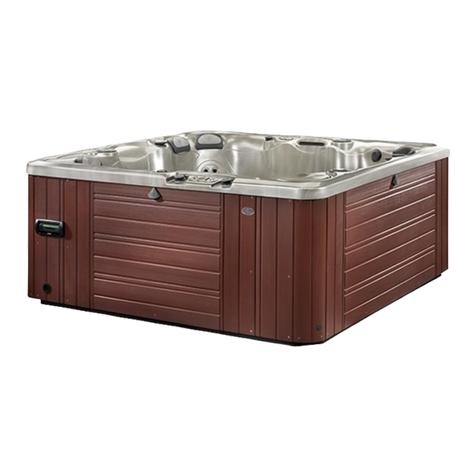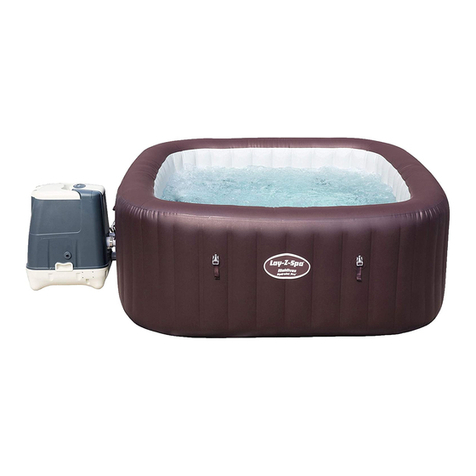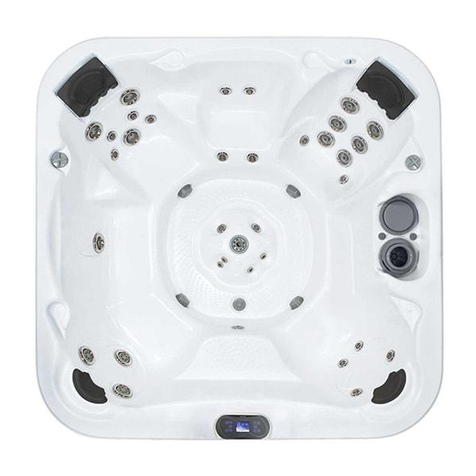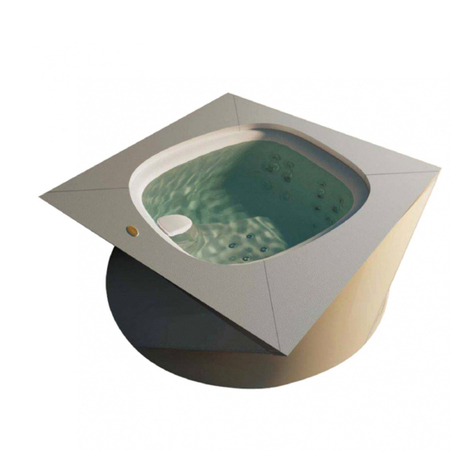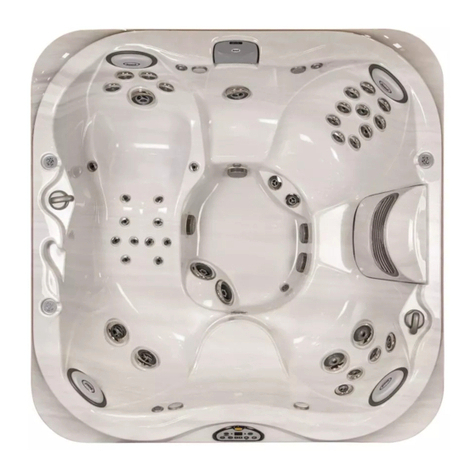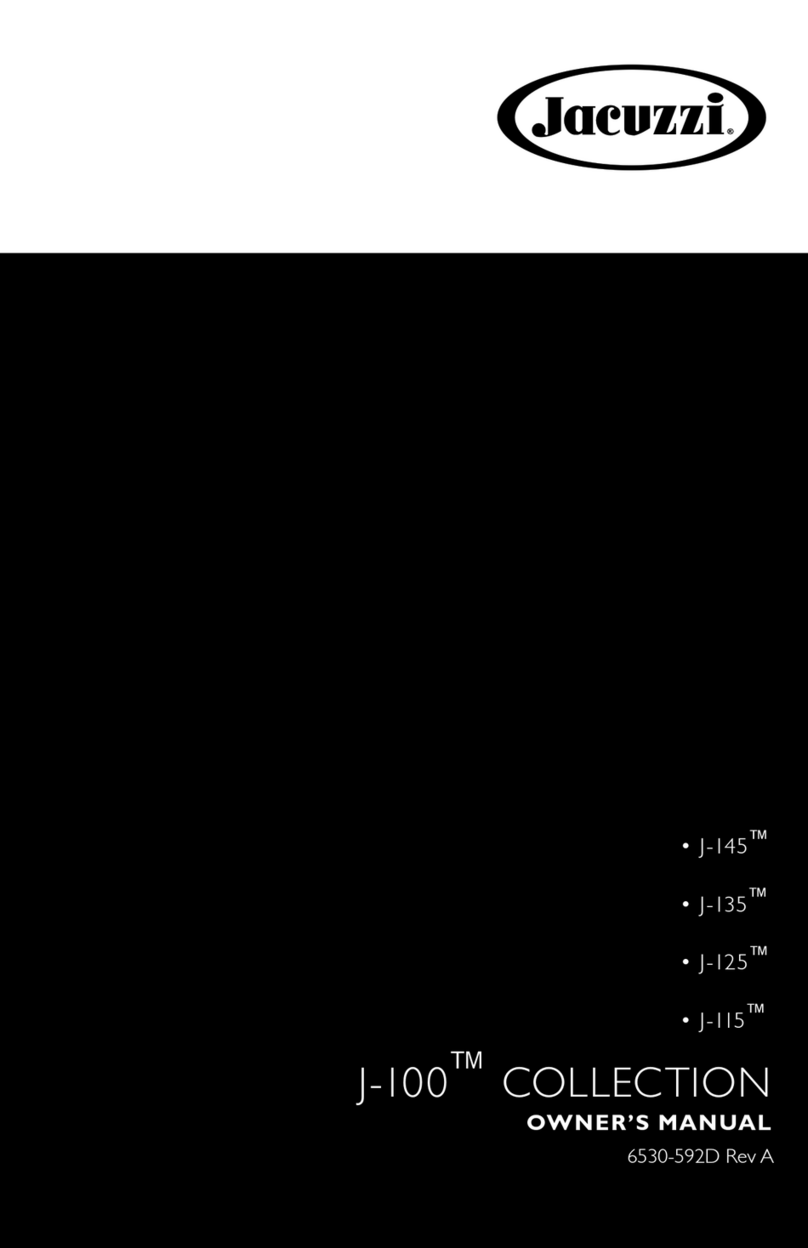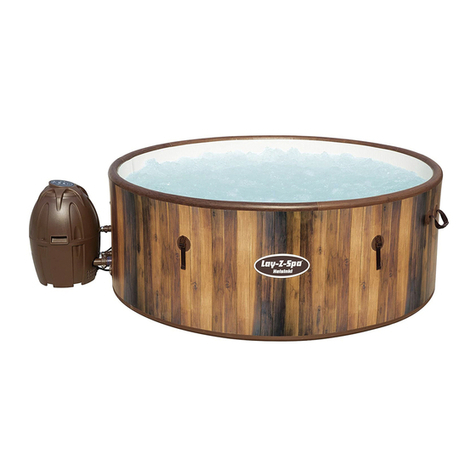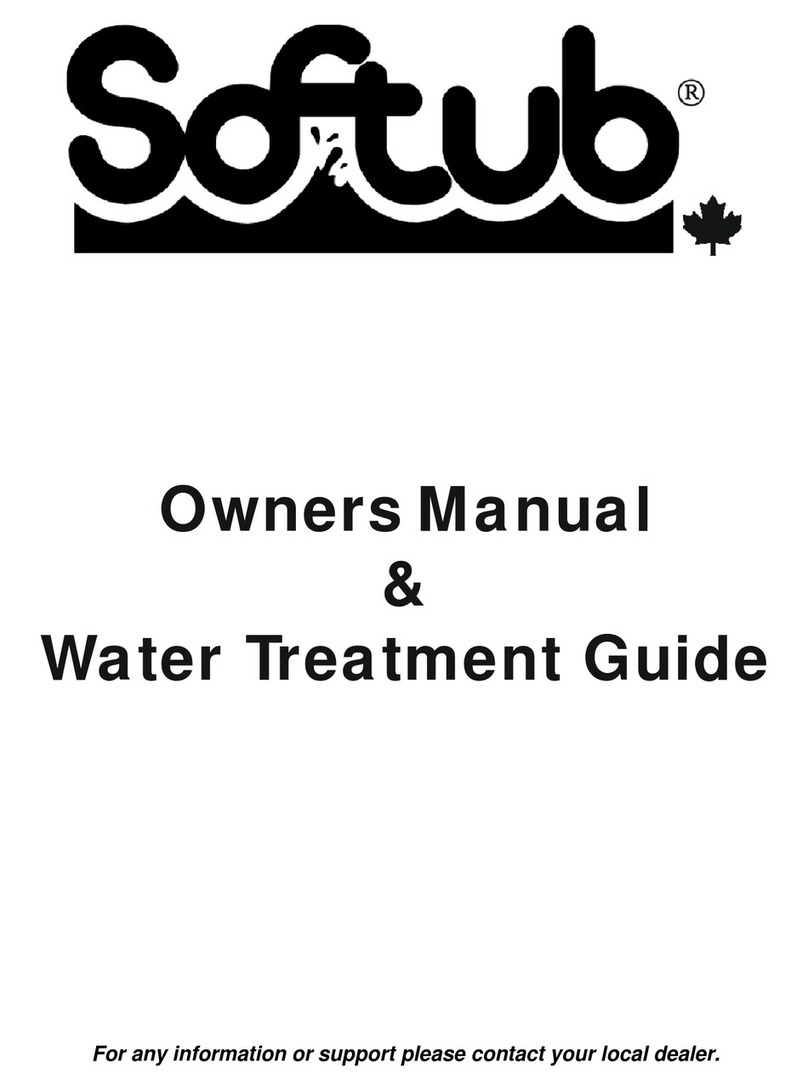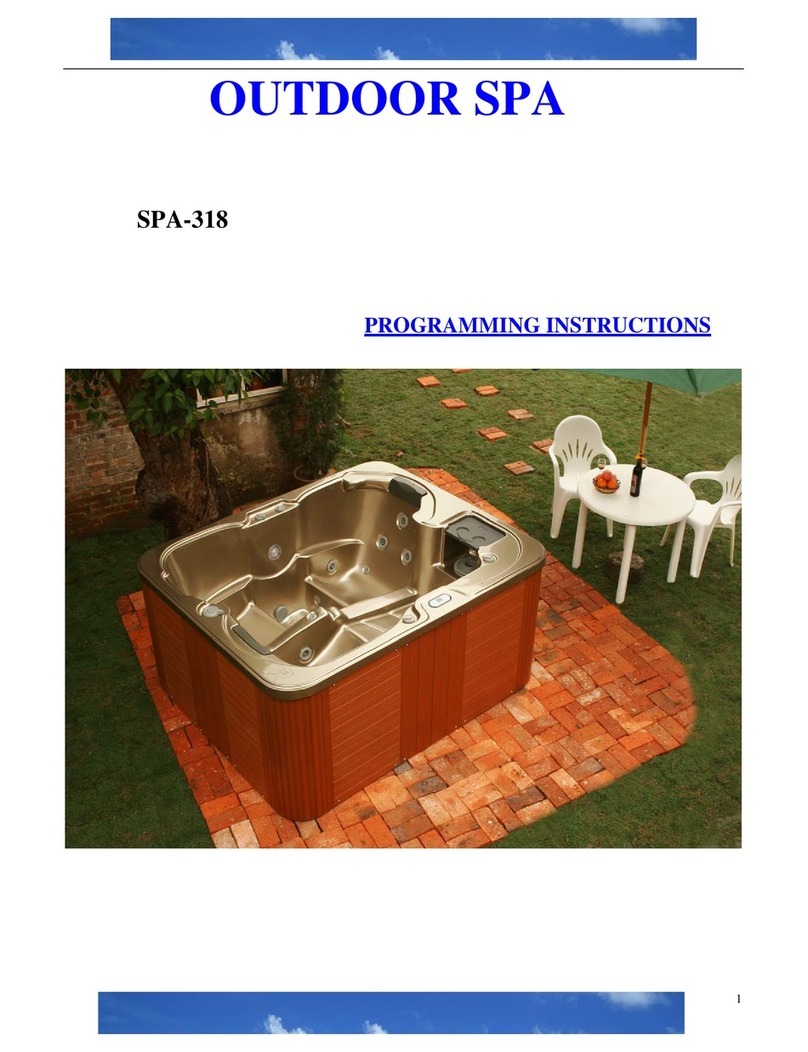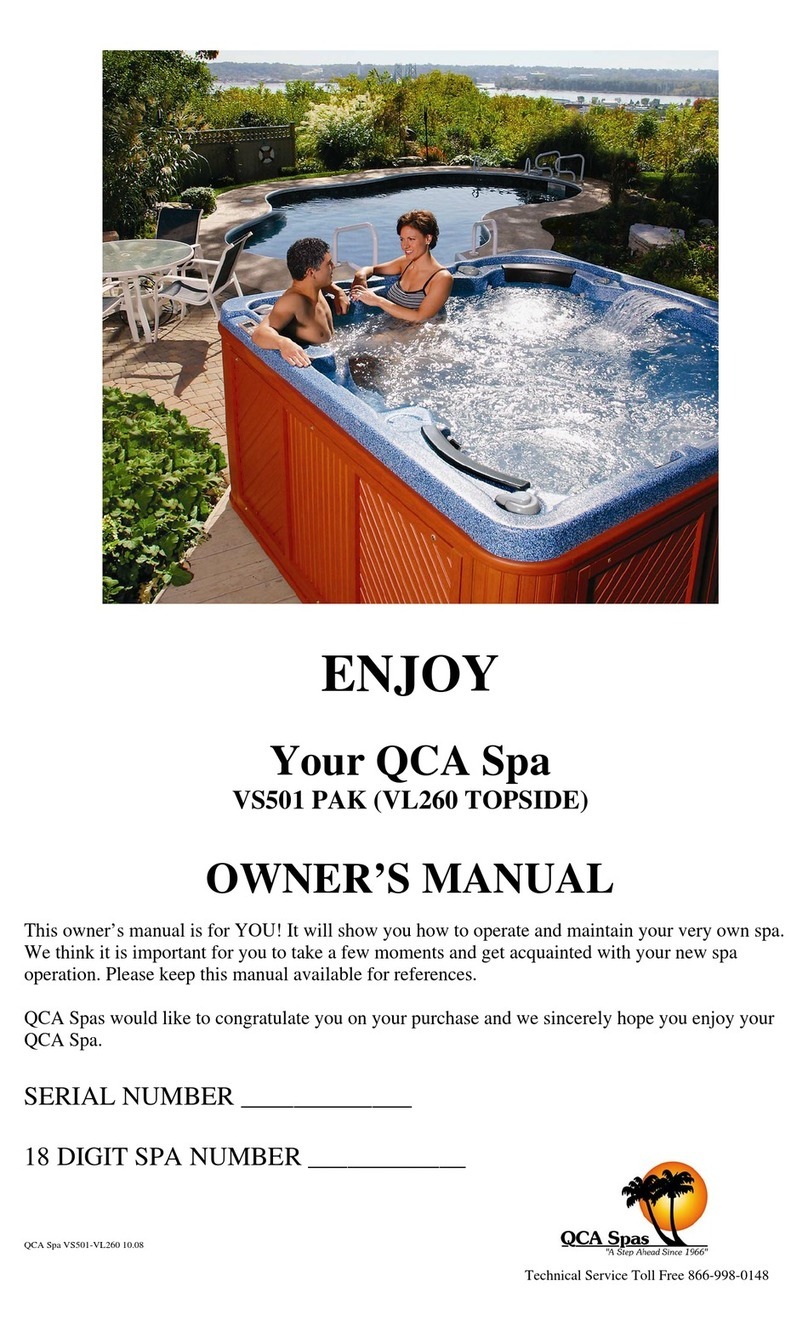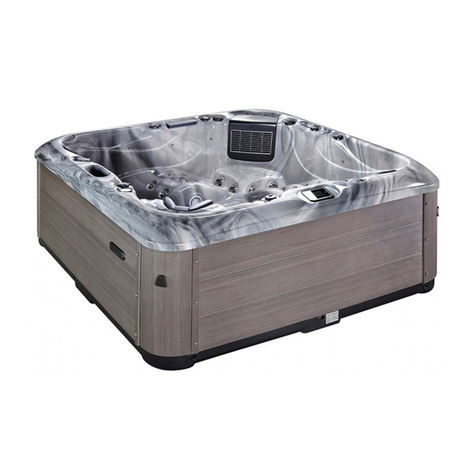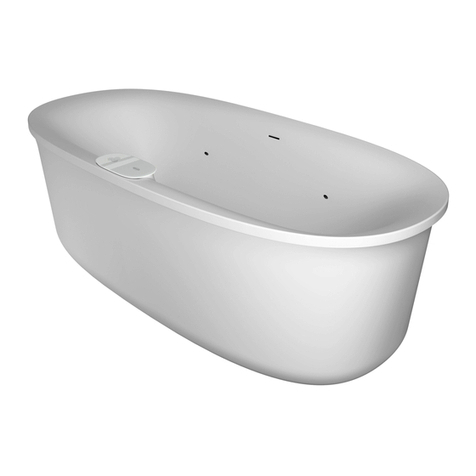3
(accessory), it should also be mounted according to the instructions. This can be done while the
joints dry.
Mending leakages for joints
If a leakage is detected, it should be fixed before the next test is made. Mark the leakage, empty the
water, wipe clean, mask the spot where the leakage has been detected (and at least 10 cm to each
side), put on some sealant, press it down and smooth it out with your finger. Then remove the tape.
You can now do the next test without drying time. Continue until the entire seating area has been
tested. Empty the water and then continue with the assembly of the side modules.
ATTENTION! A leakage which has not been resolved correctly can lead quite likely to other
leakages due to its material movements. A leakage should be always resolved from “inside” and
without any delay.
Side module assembly
Before starting the side module assembly, apply masking tape to the top of the benches around the
entire seating area. Follow the marked line, picture 23. Start by mounting the side module with the
hole, and place it opposite the suction and pressure side at the base. When doing the assembly, the
masked line of the side module (left and right side) must fit in so it meets exactly the line of the
joints on the seating module, picture 24/L. When the side modules are assembled so that horizontal
and vertical joints follow each other, the result will look good. The side modules should follow the
outer line where the masking tape is, picture 24/K, 25/M. NOTE! The side should not be tapped so
hard that they move towards the masking tape. At the base, there is also a line showing
approximately how far the three longer staves should be tapped inwards, picture 24/J.
Tightening the hot tub
After the side modules have been assembled, they must be tightened and “locked” with 2 included
stainless hoops. Follow the measurements and placing shown in picture 26. The tightening must be
made in stages. First tighten the lower part, but only until it feels a bit tight. Walk around the tub
and tap with the rubber mallet at the height where the side modules and benches are fastened to
each other. Try to get an even distance between side modules and the line where the masking tape
is. At this stage it is still possible to make the vertical groove on the side to follow the joint between
the benches. NOTE! Be careful and don’t tap the outer staves in the outer-most side module from
the side. This could cause cracks along the joint that is already plasticized. If cracks occur they must
be dealt with later according to the method that has been described earlier in the chapter
“Preparing the side modules”. Tighten the upper hoop every time the lower hoop has been fixed.
The opening between the hoops should be approx. 40 mm when they are tightened enough, picture
26/N.
Sealing benches and sides
First fill the vertical grooves between the side modules, 6 pcs, with sealant. Then apply sealant to
the joint between benches and sides, picture 27. Smooth everything out before removing masking
tape, picture 28. Let the joints dry and then add coating. Check additional instruction “Mask
properly” for drying times, section 5.
Leakage test above benches
When everything else has been assembled, including the thermostat sensor and skimmer. Use
silicone in the hole for the screws. If you have an AquaKing Jets, all the jet nozzles should also be
mounted with included hose connections. Follow separate instructions. HINT! This can be also
done while the joints are drying. A leakage test can now be made above the benches. First, fill water
over the joint where the benches and the sides are mounted, picture 29/1. Check for any leakages.
Then make the leakage test above, picture 29/2. Normally there is no reason why there should be a
